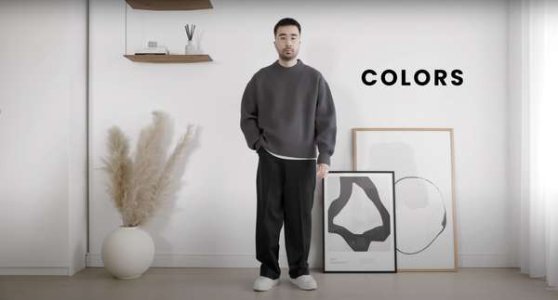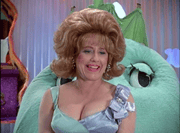Psychologists explain how the colors you wear can influence the way people perceive you
- Replies 0
Every day, the colors we wear send signals—whether we realize it or not.
Some shades feel like second nature, while others rarely make it into rotation.
But what if those choices weren’t just about fashion? There may be deeper reasons behind why certain colors dominate your wardrobe.
Black has long been a dominant force in fashion, from the runways of Paris to everyday wardrobes.
Coco Chanel once stated, "I imposed black." Until now, it remains a powerful color.
But beyond its aesthetic appeal, black is also tied to psychological traits that influence perception and identity.
Psychologist Lara Ferreiro explains that black can symbolize power, strength, and simplicity.
It’s often associated with confidence and credibility, which is why it’s a go-to choice for professional settings—think of the classic black suit or the little black dress.
A survey even found that 50% of women and 64% of men perceive black as the color of confidence.
While black often represents sophistication, its meaning isn’t always positive.
In Western culture, it’s commonly linked to melancholy, mourning, and introspection. Ferreiro suggests that people experiencing loneliness or sadness may gravitate toward black as a form of comfort or self-protection.
At the same time, black is associated with individualism, secrecy, and mystery. It can be a way to create distance, establish boundaries, or reflect an introspective personality.
Many who prefer black are seen as reserved, deep thinkers, or people who prefer to keep a low profile.
If black is bold and commanding, gray is its quieter counterpart.
Historically, gray symbolized humility, worn by monks and the working class. Today, it's a staple of modern fashion, projecting refinement and subtle confidence.
Psychologically, gray is seen as neutral and balanced, making it a favorite in professional settings.
It allows the wearer to blend in without demanding attention, but when paired with brighter hues, it can add a sophisticated contrast.
Whether you gravitate toward black for its power and mystery or gray for its subtle sophistication, your clothing choices may reflect aspects of your personality more than you realize.
Understanding the psychology behind color preferences can offer a new perspective on how you present yourself to the world—and what your wardrobe might be saying about you.
Curious about more psychological insights? Find out how a playful mindset can boost your calm and explore the surprising connection between tongue tricks and intelligence—you might be overlooking fascinating clues about yourself.
 Do you find yourself reaching for black or gray more often? What do you think your color choices say about you? Share your thoughts in the comments below!
Do you find yourself reaching for black or gray more often? What do you think your color choices say about you? Share your thoughts in the comments below!
Also read: Unlock a Happier, Healthier Life: The Surprising Household Habit That Can Boost Your Mood!
Some shades feel like second nature, while others rarely make it into rotation.
But what if those choices weren’t just about fashion? There may be deeper reasons behind why certain colors dominate your wardrobe.
Black has long been a dominant force in fashion, from the runways of Paris to everyday wardrobes.
Coco Chanel once stated, "I imposed black." Until now, it remains a powerful color.
But beyond its aesthetic appeal, black is also tied to psychological traits that influence perception and identity.
Psychologist Lara Ferreiro explains that black can symbolize power, strength, and simplicity.
It’s often associated with confidence and credibility, which is why it’s a go-to choice for professional settings—think of the classic black suit or the little black dress.
A survey even found that 50% of women and 64% of men perceive black as the color of confidence.
While black often represents sophistication, its meaning isn’t always positive.
In Western culture, it’s commonly linked to melancholy, mourning, and introspection. Ferreiro suggests that people experiencing loneliness or sadness may gravitate toward black as a form of comfort or self-protection.
At the same time, black is associated with individualism, secrecy, and mystery. It can be a way to create distance, establish boundaries, or reflect an introspective personality.
Many who prefer black are seen as reserved, deep thinkers, or people who prefer to keep a low profile.
If black is bold and commanding, gray is its quieter counterpart.
Historically, gray symbolized humility, worn by monks and the working class. Today, it's a staple of modern fashion, projecting refinement and subtle confidence.
Psychologically, gray is seen as neutral and balanced, making it a favorite in professional settings.
It allows the wearer to blend in without demanding attention, but when paired with brighter hues, it can add a sophisticated contrast.
Whether you gravitate toward black for its power and mystery or gray for its subtle sophistication, your clothing choices may reflect aspects of your personality more than you realize.
Understanding the psychology behind color preferences can offer a new perspective on how you present yourself to the world—and what your wardrobe might be saying about you.
Curious about more psychological insights? Find out how a playful mindset can boost your calm and explore the surprising connection between tongue tricks and intelligence—you might be overlooking fascinating clues about yourself.
Key Takeaways
- Black is associated with power, elegance, confidence, and credibility, making it a common choice in fashion and professional settings.
- Some people wear black for emotional reasons, as it can provide comfort, reflect introspection, or symbolize personal boundaries.
- In Western culture, black is linked to both strength and darker emotions, including mourning and secrecy.
- Gray represents neutrality and sophistication, offering a more understated but equally impactful fashion choice.
Also read: Unlock a Happier, Healthier Life: The Surprising Household Habit That Can Boost Your Mood!







